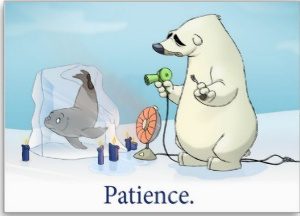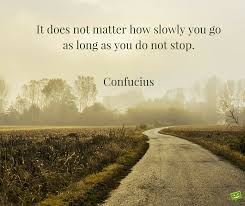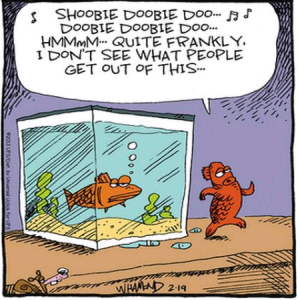 “It ain’t what you don’t know that gets you into trouble, It’s what you know for sure that just ain’t so”.
“It ain’t what you don’t know that gets you into trouble, It’s what you know for sure that just ain’t so”.
~ from the movie “The Big Short”
Why is it that people don’t like this quote? Can you guess?
I see it all the time. People are quite certain that what they know is true, and are puzzled by the fact that they don’t feel good about themselves, about their place in the world, about their lives.
This includes smart people, and this includes people who are not that sophisticated.
We, as a species, are full of knowledge that just isn’t so. And when we build theories, actions, futures, arguments on those untruths, then things don’t work.
And now, as a nation, Americans entered the post-truth world.
The word, post-truth is a wholly Tree of Knowledge phenomenon, making this fact that you know things that are not true trite.
Is it trite? No. It makes life, your life miserable, kept hostage by the untruths… because you are stuck at the place where you are, and there is only downward from there, unless…
…Unless you start working on seeing more. Seeing more will start activating your brain that is asleep.
We live in a world where everything is meted out to you, ready for consumption, no preparation, no thinking, no work required. We are treated as dumb children…
So your thinking apparatus, and your work apparatus have atrophied.
It won’t come back to life, to serve you, to help you tell truth from falsehood, without you actually attempting to do the work you are asking of your dead apparatus to do.
Huh?
Yeah. You need to stimulate your brain, your muscles, your determination, your resilience, your ambition, your curiosity, even though they are all dead. Just use another part of your brain to do it.
 Christopher Reeves, the actor who became famous for his role in Tarzan, fell of his horse and became a quadriplegic. The doctors told him that he would never move.
Christopher Reeves, the actor who became famous for his role in Tarzan, fell of his horse and became a quadriplegic. The doctors told him that he would never move.
But he had his brain and for years he was exercising the brain circuits that would move his limbs, control his bladder, etc.
And after years of exercising the connection got restored. How? I don’t know. But I know that unless you are brain dead, you can do what he did, and have better results: your spine did not get severed.
There is a step in Tai’s 67 steps, where he talks about patience and impatience.
The way he says it is stupid, and yet the idea is very solid.
There are two types of people, depending on their impatience.
- 1. There are people who are patient first and impatient second.You probably belong to this group. 87% of humans belong to this group.So what do you do? You have dreams, you have maybe even aspirations.So you feel that some day one day, maybe on January 1, or maybe after you lose the weight, or after you get your divorce, or after you get a raise, you’ll do something.I have students who are like this: talk about actions, but it is all talk.And then comes the impatient second part: when they finally get off their ass, they expect instant results.
But life doesn’t work like that. All instant results in life incubated for a long time… they just seem instant.
The ten dark years of world-famous people. The years of developing skills, experience, real knowledge. The hundreds of books. The experiments. They are all the invisible part of that instant result. Below the water level… The incubation.
No result? Frustration leads to anger, to shame, to guilt, and to quitting.
This repeats itself possibly countless of times. And this is the life of the first patient and next impatient people.
- 2. The second group is first impatient and then patient.I belong to this second group.
 When in 1986 I first saw that I wanted to be a publisher, I started learning mail order. I read books. I placed small ads in newspapers and magazines for information I sold for a buck or two, plus “shipping”.If you are old enough, you remember that we, mail order operators asked the buyer to send us a stamped, self-addressed #10 envelope… I stuffed the one-two-three pages long informative report into the #10 envelope, and mailed it.I knew that this was preparation for something bigger.
When in 1986 I first saw that I wanted to be a publisher, I started learning mail order. I read books. I placed small ads in newspapers and magazines for information I sold for a buck or two, plus “shipping”.If you are old enough, you remember that we, mail order operators asked the buyer to send us a stamped, self-addressed #10 envelope… I stuffed the one-two-three pages long informative report into the #10 envelope, and mailed it.I knew that this was preparation for something bigger. I designed ads, display ads. I bought a copy-machine. I busted my ass for no profit at all. I was in training.
I designed ads, display ads. I bought a copy-machine. I busted my ass for no profit at all. I was in training.Then I apprenticed with a printer… learned how printing is. The goal wasn’t to become a printer, the goal was to know how to prepare my one-day-some-day publication for printing.
Then I became a sales person for a local TV guide. I sold ads. To stores.
 Then I delivered the local TV guide to these same stores for distribution. The papers were free.
Then I delivered the local TV guide to these same stores for distribution. The papers were free.Then I got myself a computer system, Macintosh, and designed the TV guide for the owner on my computer…
This way I learned computer, desktop publishing…
 And when in 1988 the owner kicked me out, I could come out, “instantly” with my own publication… Even that instantly wasn’t that instant: it took me getting credit from the typesetters, getting credit from the printers, asking the stores that I sold ads to to give me trust, for just one issue… and then work all night, really all night, to come out the first issue of my new magazine, Good Times.
And when in 1988 the owner kicked me out, I could come out, “instantly” with my own publication… Even that instantly wasn’t that instant: it took me getting credit from the typesetters, getting credit from the printers, asking the stores that I sold ads to to give me trust, for just one issue… and then work all night, really all night, to come out the first issue of my new magazine, Good Times.It only took two years. Because I already had some skills… don’t discount that I had some design skills from my 17 years as an architect previously.
So, yeah, this is the path of an impatient first, and patient second person.
If you look at life, animals, even people, have sex impatiently, and then suffer through the nine months of “incubation”… and then the 18 years of supporting that child until it can support themselves…
The patient/impatient person would expect the child to come out, instantly, as an adult.
Not how life works.
 I am still a publisher, if you look closely. I have just added new ways to support my publication.
I am still a publisher, if you look closely. I have just added new ways to support my publication.
It is not advertising supported, it is now services and products supported. I don’t just publish, I create products and services.
People often write to me that it is immoral for me to charge for my products and services, I should give them for free to people who need it. Which is really everybody.
Because that would be moral and ethical.
Yeah… I get it.
The people who say this are sure they are right.
And that they are deluded is obvious even to you, I hope.
But you have just as many delusions, some are even as obvious as those guys’. They are just simply invisible to you.
Or some are visible but… but you can’t change your mind. One of the ways you get stuck with untruths about you, about life, about how things work, is you call them beliefs.
And those pesky beliefs don’t want to move.
Belief is a concept, and concepts don’t like to move.
But each belief is, in actuality, a bunch of “conversations”, internal or external, spoken with some regularity, unexamined.
A few of my clients have started the detective work to bring these conversations to the visible. Audible.
It’s not easy. We, on the Tree of Knowledge, were taught to speak in concepts. Label everything and never be present to what we are talking about.
But underneath the concepts, there is a whole layer that is real, and that is not stuck. That when brought to the light of consciousness, can be seen for what it is: not true, or at least questionable.
Questionable, dubious, silly are important words here… the actual internal dialog, the things you say in your head about things, about yourself, about what is possible, are your internal dialog.
Once you start hearing it instead of getting stuck on the concept level, you start your journey to reclaim your power.
Why reclaim? Because you have given your power away. To concepts. To labels. To symbols of reality.
In every area of life. Every and all areas of life.
- Your body, your eating, your exercise, your sex, your sleep.
- Your money… your work, your earning, your worth, your expertise or the lack of it.
- Your relationships
- and finally your fulfillment.
You live in a conceptual world, and this world is not human friendly. There is no chance to be happy, healthy, and fulfilled in it.
You may make money… but money without happiness, health, and fulfillment is not good for you, it is only good for someone else… but not you.
You can’t buy happiness, you can’t buy health, and you can’t buy fulfillment.
So what is there to do?
I would say it’s simple, but you’ll misunderstand. You’ll hear “easy”.
Simple is not the same as easy. Not even close. Unrelated.
Just check yourself, how many time you have heard easy, when a salesperson said “simple”. And then found out that it is not just hard, but you needed a lot of knowledge, skills, that you didn’t have.
Yeah… you see?
So the first step, if you want health, wealth, love and fulfillment is to ferret out the many many many untruths you have been conducting your life by.
Not as concepts, and not the concepts of those untruths.
NO. The internal conversation that is, thus far, ignored, but is the “body” of those untruths. The under-the-water part of the iceberg that sunk the Titanic, and sinks your life.
You can do it three ways:
- 1. Go on your own. Document what you find… the internal conversations, faithfully, verbatim. Refuse to label them, refuse to reword them, refuse to reduce them to a concept. It’s hard… but you can do it.
- 2. Do it with the 67 steps: listen to a step and observe your internal conversation. Now document it. If you stick with it, for the long term, even beyond the 180 days… then…
Eventually you’ll have a sense that all your life is based on b.s. and slowly, nearly imperceptibly, your life will start to turn in harmony with life… in harmony with how it works. It’s an inexpensive path, but many of your limiting beliefs won’t be revealed to you… because you are trying to see the back of your head… no mirror. You are alone, without support. - 3. Do it with the 67 steps, but with coaching. When someone listens to you well, you hear yourself. When you fall off the path, a coach attempts to return you. When you are doing it wrong, meaning you stay in the world of concepts, the coach attempts to redirect you. When you want to take steps on the top of unchanged lies, the coach will tell you: don’t do it.
- The students who do well, have conquered this fundamental step: hear and document the internal conversation.
- The students who don’t do well, have been refusing this step, and continue speaking in concepts, narrative, and about stuff.
It is really simple. It’s not easy. But once you get the hang of it, it is actually quite enjoyable, even though it is hard to hear those conversation.
- The students who don’t do well, I suspect, don’t get the difference between talking about it, or saying it. Verbatim.
- Explaining it, or saying it. Verbatim.
- Conceptualize it, or saying it. Verbatim.
The better a person is with words, innately, the harder this step is for them.
The students who do best are clumsy with words, work with numbers, or equipment, not with their mouths.
All that glib verbal ability keeps you cemented to the Tree of Knowledge… unless you can get the secret and glimpse the underlying internal conversation.
Now, for truth’s sake, the internal conversation is often ugly. And makes you sound like a really bad person.
This is where your TLB kicks in: if you can be with that, if you can hear it, and not shut down, you can continue. If you are a sissy boy or a sissy girl… you’ll go back to the concepts.
I can’t do it for you. And all the compassion in the world won’t make it easier. Unless it is your own compassion for yourself. Compassion. And courage.
PS: There is speaking, there are words on the Tree of Life. What isn’t there is concepts separated from actual speaking.
You see, you cannot combat concepts with concepts effectively. 90% of scientific literature tries to do that… instead of doing the work they are paid to do.
Concepts are the part of beliefs that make beliefs not changeable.
All the “gurus” who promise you to help you get rid of your beliefs are liars. They are selling you oceanfront property in landlocked Montana.
And you are buying them.
But Tree of Life words, your internal conversation, the actual words you say to yourself, can easily be seen as untrue or b.s. or a lie.
So the exercise, the practice, the life-skill I recommend in the article, to observe and document your internal conversation is the path to a changed life, because it changes your beliefs. Not instantly, but over time.
PPS: send me an email if you want me to create a webinar on how to find the conversation underneath your concepts so you can argue with them, prove them wrong, and start taking back your life. The email is [email protected]
.
.
.
| Keywords: | Description: |
| belief | an acceptance that a statement/concept is true or that something exists. It’s conceptual and therefore stuck |
| self-limiting beliefs | using these concepts to give away your power and to limit who you can be, who you can become, what you can do |
| limiting beliefs | All beliefs are limiting, because they are concepts. All concepts, instead of opening up reality, close it down, and make life and reality inaccessible for the user of a concept. Conceptual reality or unreality |
